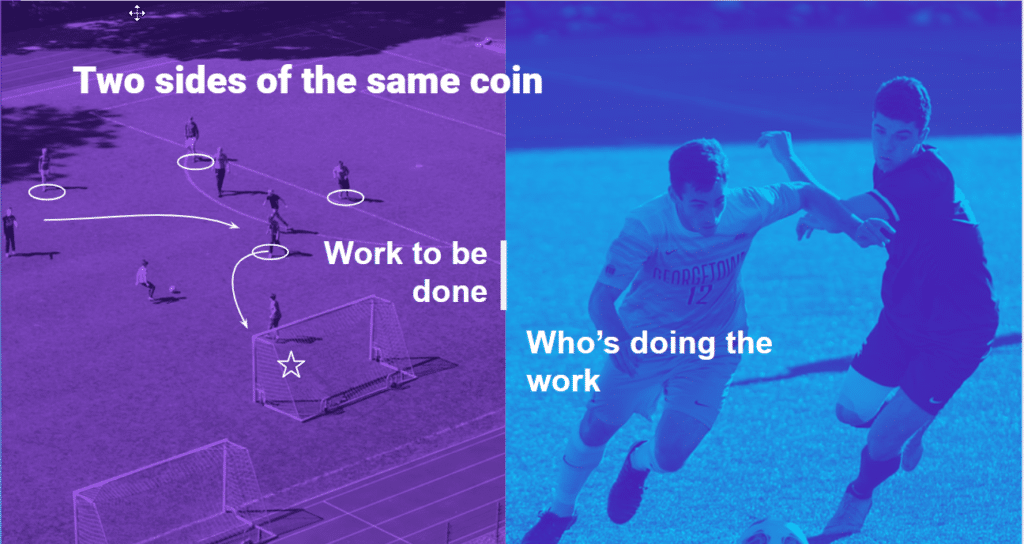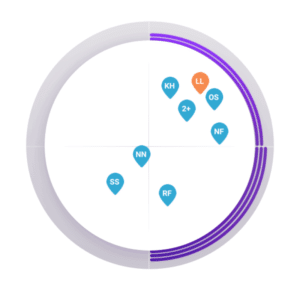Tackling Your Work as a Team
Understanding your Team Type is the first step toward building a dream team. Just as important, however, is understanding the work your team is looking to accomplish.
At PI, we’ve identified 10 Strategy Types used to describe common team objectives. By visualizing your Team Type and Strategy Type side by side, you’ll be able to identify risks and opportunity areas when it comes to executing your team’s strategy.
Click below to learn more about each of the 10 Strategy Types.
Who’s doing the work, and what’s the work to be done?

PI Design helps you understand how people think and work. In particular, it helps you understand what your team members are best at, and where they may need to stretch.
As an example, let’s imagine a coach asks the goalie on a soccer team to cover an offensive position. Since the goalie can’t feasibly do both jobs at full capacity, the goalie will have to stretch outside of their comfort zone to meet the needs of the team. Once you understand where gaps exist between someone’s comfort zone (or natural behavioral style) and the work they’re being asked to do, you can coach the “players on the field” to execute effectively.
By helping people understand their strengths, gaps, and opportunity areas to flex, you’ll be able to tap into their individual superpowers—and build dream teams that can execute on any strategy.
Understanding the “Work Styles” framework
PI Design leverages a four-quadrant grid, known as the Work Styles framework, to help you visualize and interpret team behavior.
By adding individual team members to this grid, you’ll learn more about their unique behavioral strengths and caution areas. The software will then take the aggregate of these results, and reveal the team’s collective behavioral identity, or “Team Type.”
Work Styles can also be used to map the team’s abilities to the Strategy Type your team is pursuing. By seeing that your Team Type and Strategy Type are aligned, you can ensure you’re playing to your people’s strengths—and setting the team up for success.
Click below to learn about each Work Styles quadrant.
Keep in mind:
When you click on a person, you’ll see their behavioral profile at a glance. Understanding each team member’s preferred communication style can help foster better working relationships.

All teams have certain strengths and caution areas. PI Design allows teams to see where they’re well suited to tackle the work to be done, and where they’ll need to flex toward a different quadrant to execute their goals.

Understanding where gaps exist between your team’s natural behaviors and your strategy objectives is just the beginning. Everyone on the team must understand the team’s collective behavioral style (i.e., Team Type) in the context of the work to be done to continually adapt. Leaders play a pivotal role in coaching teams to flex their strengths and weaknesses alike to achieve their goals.
Curious about the science behind the PI Behavioral Assessment?
Read the report from PI’s science team.
To inform us of a typo or other error, click here. To request a new feature, click here.